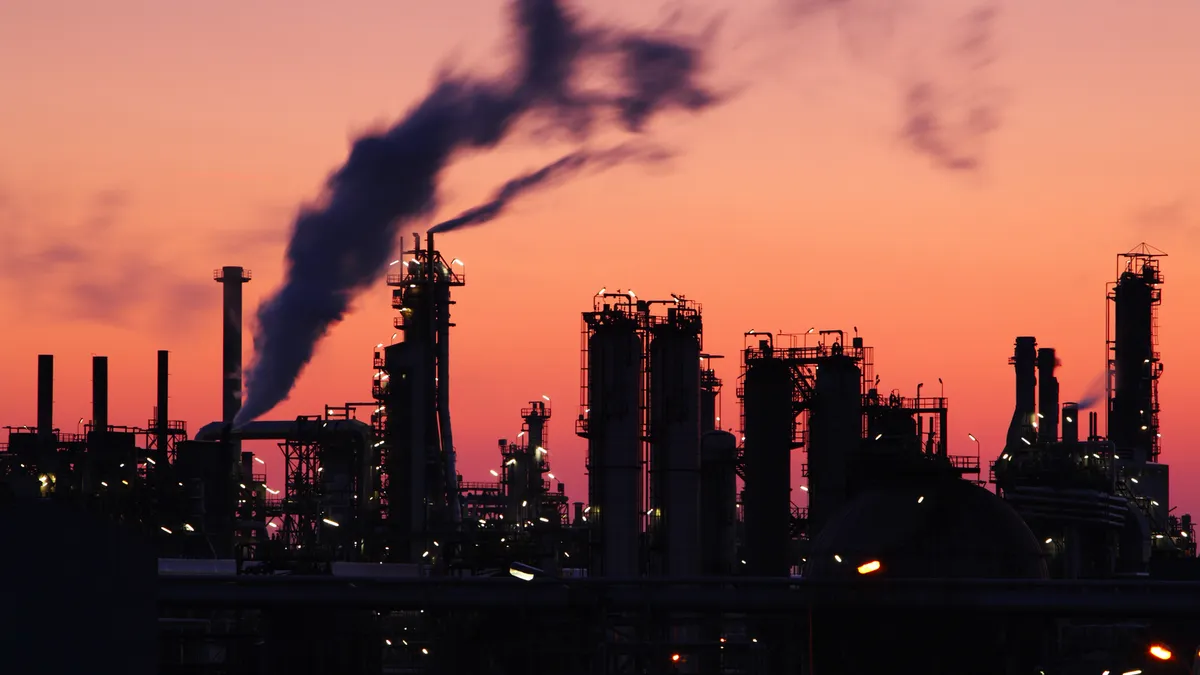Dive Brief:
-
Federal energy officials are calling for an increased focus on carbon capture and sequestration (CCS) technologies, as well as advanced nuclear, as the Senate tees up climate-focused bills to counter the House's Green New Deal legislative package.
-
"If you think you're going to eliminate fossil fuels any time soon in the world, you're mistaken," Sen. Joe Manchin, D-W.Va., said at the United States Energy Association's annual public policy forum on Thursday. Senate Republicans are expected to soon introduce a bill to fund advanced nuclear and CCS technologies, according to Bloomberg, which coal supporters consider key to the fuel's future.
-
"Our motto has been very simple: we don't eliminate, we innovate," said Manchin, touting another bill drafted by House Republicans dubbed the "Real New Deal," which also focuses on nuclear and carbon capture advancements. "Bottom line, if you want to decarbonize, then you better not pull nukes off, you better make sure nukes are up and running and expanding where you can."
Dive Insight:
The Senate majority's focus on coal and nuclear echoes the Trump administration's long-standing prioritization of the resources.
Though the Republican-led Senate and the newly Democratic-majority House seem to have different priorities regarding what resources to focus on — the House Subcommittee on Energy last week held a hearing on advancing solar and wind technologies — both chambers seem to be able to agree on storage.
Four bipartisan energy storage bills were introduced on Wednesday — two bills in the Senate, each with a companion in the House — joining a slate of other bills focused on providing more R&D to the technology.
But more nuclear and carbon capture-focused bills will continue to gain ground in the Senate, as Sens. Mitt Romney, R-Utah and Lindsey Graham, R-S.C., prepare to introduce the Clean Energy Investment Fund to support advanced nuclear and CCS technologies.
Department of Energy research has focused increasingly on building a smaller, more efficient coal fleet, which opponents say is "political, not practical." And last week, the Senate Committee on Energy and Natural Resources held a hearing on advancing CCS technologies, with Chair Lisa Murkowski, R-Alaska, and Ranking Member Manchin expressing enthusiasm for the technology.
"There's a sense of urgency, so we urge you to be more creative, more nimble, more malleable as you work to build out what I think are some very exciting opportunities for us," said Murkowski. "You also need to urge us to be responsive in what role and how the government can be a better partner in all of this."
Both senators introduced a bill earlier in April, along with Sens. Shelley Moore Capito, R-W.Va., Kevin Cramer, R-N.D., and Steve Daines, R-Mont., to direct the Department of Energy's Office of Fossil Energy to develop four new research and development programs focused on carbon capture technology for coal and natural gas.
"DOE is taking a close look at CCS and I think it's important," said Environmental Protection Agency Administrator Andrew Wheeler during Thursday's USEA forum. "There's a lot of research that still needs to take place," he said, noting that carbon capture works, but "sequestration still has a lot of questions."
CCS research initiatives have also focused on driving down costs for the technology, which the utility sector has been slow to adopt without sufficient financial incentives. Earlier this week, 10 members of Congress and the Carbon Capture Coalition, separately called on the Treasury Department to issue guidance on implementing a carbon capture utilization and storage tax credit authorized by Congress more than a year ago.
But the DOE is still looking at the method as a potential path to resurrection for some coal plants. Last week, DOE Assistant Secretary of Fossil Energy Steven Winberg told Senators his office has been looking at carbon capture technology as one potential avenue for keeping open the 2,094 MW Colstrip coal plant in Montana. Two of the facility's units are scheduled for retirement in 2022 and the other two by 2035 or sooner.















